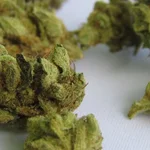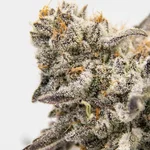Understanding the Cost of Prescription Drugs
Prescription drugs have become an essential part of healthcare, with millions of people relying on them to manage chronic illnesses, cure infections, and relieve pain. However, the cost of prescription drugs can be a significant burden on patients, especially those without adequate insurance coverage. According to a report by the Kaiser Family Foundation, the average cost of a brand-name prescription drug in the US increased by more than 60% between 2008 and 2018, reaching over $6,000 per year in 2017.
Factors Affecting Prescription Drug Costs
The high cost of prescription drugs can be attributed to several factors, including:
- Research and Development Costs: Pharmaceutical companies spend billions of dollars on researching and developing new drugs, and these costs are passed on to consumers.
- Marketing Costs: Pharmaceutical companies spend large amounts of money promoting their drugs to healthcare providers and the public.
- Patent Protection: Patents allow pharmaceutical companies to monopolize the market for a particular drug, preventing generic alternatives from entering the market and driving prices down.
- Insurance Coverage: The lack of insurance coverage for prescription drugs can leave patients with a high out-of-pocket cost.
The Cost of Medical Marijuana
Medical marijuana has become an increasingly popular alternative to prescription drugs for managing pain, anxiety, and other conditions. However, the cost of medical marijuana can vary depending on several factors.
Factors Affecting Medical Marijuana Costs
The factors that can affect the cost of medical marijuana include:
- State Regulations: The cost of medical marijuana can vary depending on the state in which it is purchased. Some states have higher taxes or fees on medical marijuana, making it more expensive.
- Dispensary Prices: The cost of medical marijuana can also vary depending on the dispensary from which it is purchased. Different dispensaries may have different pricing structures, discounts, and promotions.
- Type of Product: The cost of medical marijuana can also vary depending on the type of product. For example, edibles and concentrates may be more expensive than traditional flower.
Comparing the Costs of Medical Marijuana and Prescription Drugs
When it comes to comparing the cost of medical marijuana and prescription drugs, it is important to consider several factors.
Cost-effectiveness
While medical marijuana may be cheaper than prescription drugs in some cases, it is essential to consider cost-effectiveness. For example, if a prescription drug is more effective in treating a particular condition, it may be more cost-effective in the long run, even if it is more expensive upfront.
Insurance Coverage
Another factor to consider is insurance coverage. While prescription drugs may be more expensive overall, patients with insurance coverage may be able to pay less out-of-pocket than they would for medical marijuana, which is often not covered by insurance.
Regulations
The regulations surrounding medical marijuana can also affect its cost-effectiveness. Some states have strict regulations on who can access medical marijuana and how much they can purchase, which can drive up costs. Additionally, the lack of federal regulation on medical marijuana can create uncertainty for patients and providers, making it more difficult to determine its cost-effectiveness.
Patient Preferences
Finally, patient preferences should be considered when comparing the costs of medical marijuana and prescription drugs. Some patients may prefer medical marijuana due to its perceived effectiveness or lack of side effects, while others may prefer prescription drugs due to their familiarity and reliability.
Conclusion
In conclusion, the cost of medical marijuana and prescription drugs can vary depending on several factors. While medical marijuana may be cheaper than prescription drugs in some cases, it is essential to consider cost-effectiveness, insurance coverage, regulations, and patient preferences when making a comparison. Ultimately, the decision between medical marijuana and prescription drugs should be made in consultation with a healthcare provider and based on the individual needs and preferences of the patient.












